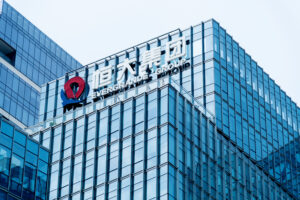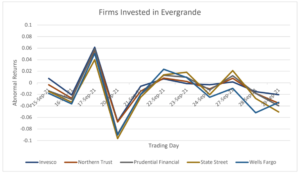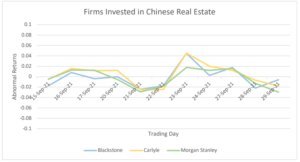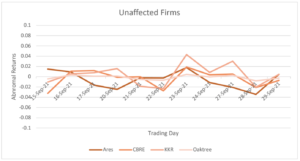
Article by Katie Chen
On September 22nd, 2021, Chinese real estate giant Evergrande failed to meet a coupon deadline totaling $83 million of bond interest payments. News outlets drew comparisons between Evergrande’s crisis and the Lehman Brothers’ collapse; it seemed as though Evergrande’s potential bankruptcy had the ability to trigger global financial panic.
As the second-largest real estate company in China, Evergrande poses a threat of financial contagion if it defaults. It outperforms competitors by aggressively outbidding others in acquiring land from the government. Evergrande has become highly leveraged through this strategy, with firm liabilities totaling 2 trillion RMB ($287 billion) in 2021 equaling 2% of China’s GDP.
In 2020, Premier Xi Jinping implemented the “three red lines” policy to crack down on highly leveraged real estate firms. Evergrande has since been facing the consequences of its risky capital structure. Throughout 2021, Evergrande missed several repayment deadlines and experienced a series of rating downgrades. By September 2021, its stock price had dropped 85% from its January price.
The world watched closely as Evergrande struggled to make its debt payments, particularly financiers in the United States. While geopolitics have negatively impacted trade flows between US and China, regulations have yet to extend to capital markets and financial linkages between the two countries continue to deepen. Since 2016, there has been a significant increase in the number of American and European investments into Chinese securities, totaling $1.1 trillion in the summer of 2021 alone. As of September 2021, several large American firms held significant amounts of Evergrande shares. Given this, did US investors and the American public believe that there would be a contagion effect from the Evergrande crisis based on Evergrande’s failure to meet its payment deadline on September 22nd?
To examine this question, I constructed three portfolios containing American firms of interest and observed their abnormal returns during the period of the missed payment shock. Abnormal returns capture unexpected share price movements, those in excess of expected returns during that time period as predicted by a three-factor CAPM, a pricing model that quantifies the returns of similar stocks. Significantly negative abnormal returns during this time period signify that American investors reacted negatively to the Evergrande shock.
The first portfolio contains firms that would be most affected by the September 22nd event: firms that held significant amounts of Evergrande shares through the month of September. The second portfolio contains firms that may be secondarily affected by the shock: firms that held significant investment in the Chinese real estate sector. The third portfolio contains comparable firms to the first two portfolios, but differing in that they are not invested in Chinese real estate at all. In other
words, the firms in the third portfolio should be unaffected by the Evergrande shock and serves as a control group.
I then constructed abnormal returns for these firms from September 15th to September 29th. It is important to examine abnormal returns 5 trading days prior to the shock because investors may have already anticipated Evergrande’s failure to meet its payment deadline, and their negative reaction may be captured in the trading days leading up the September 22nd. For example, S&P downgraded Evergrande to ‘CC’ on September 15th because they believe nonpayment risk is extremely high and a “default scenario is virtual certainty”, which may have influenced investors. It is also important to examine abnormal returns 5 trading days post-shock in order to observe any lingering effects in the market.
Figure 1. Abnormal returns for American firms invested in Evergrande
Figure 2. Abnormal returns for American firms invested in Chinese Real Estate

Figure 3. Abnormal returns for comparable American firms

For the portfolio containing unaffected firms, the cumulative average abnormal return (CAAR) is -0.019. The portfolio containing firms invested in Chinese real estate exhibit a similar range of abnormal return values to the unaffected firms, meaning that investors did not believe American firms invested in Chinese real estate would be negatively impacted by the Evergrande shock.
In comparison, the portfolio containing firms invested in Evergrande exhibits CAAR of -0.0402. It is interesting to note that the day of the lowest abnormal return took place was on September 20th, two trading days before the actual shock took place. Overall, the difference in minimum abnormal returns as well as CAAR between the unaffected firms and the firms invested in Evergrande remain small, meaning that there is no significant negative reaction from American investors.
The reason why Evergrande wasn’t China’s Lehman moment is eloquently summarized by Mr. Motwani, who worked as an analyst at Credit Suisse during Lehman’s collapse: “The biggest difference between the two is that Evergrande was a train wreck that everyone saw coming
